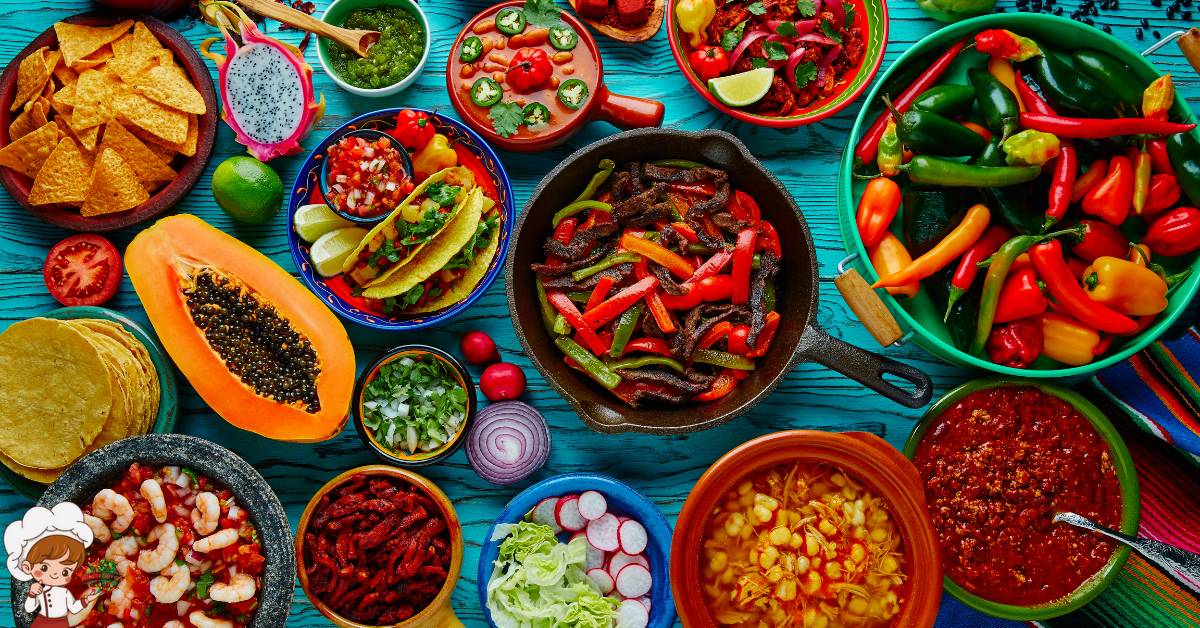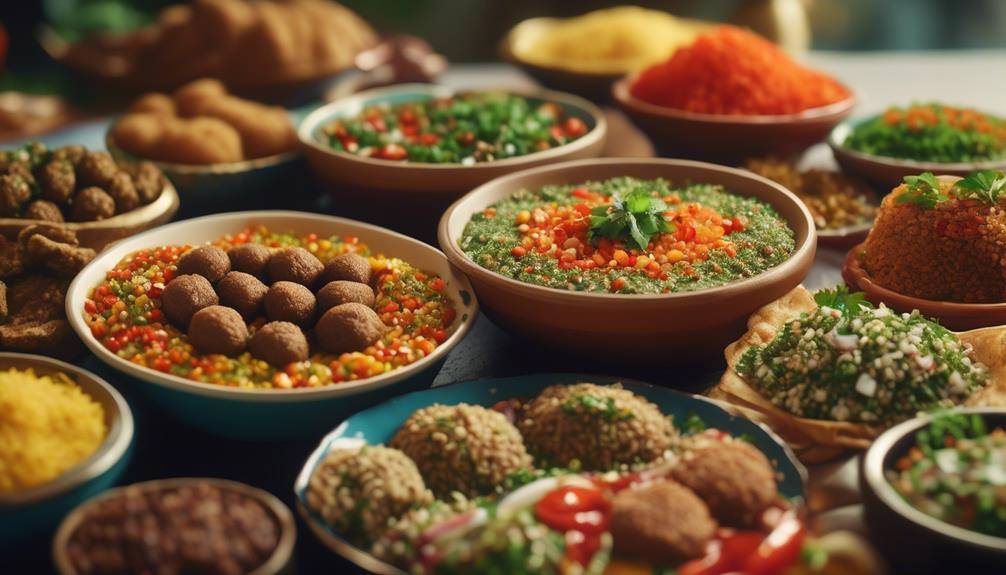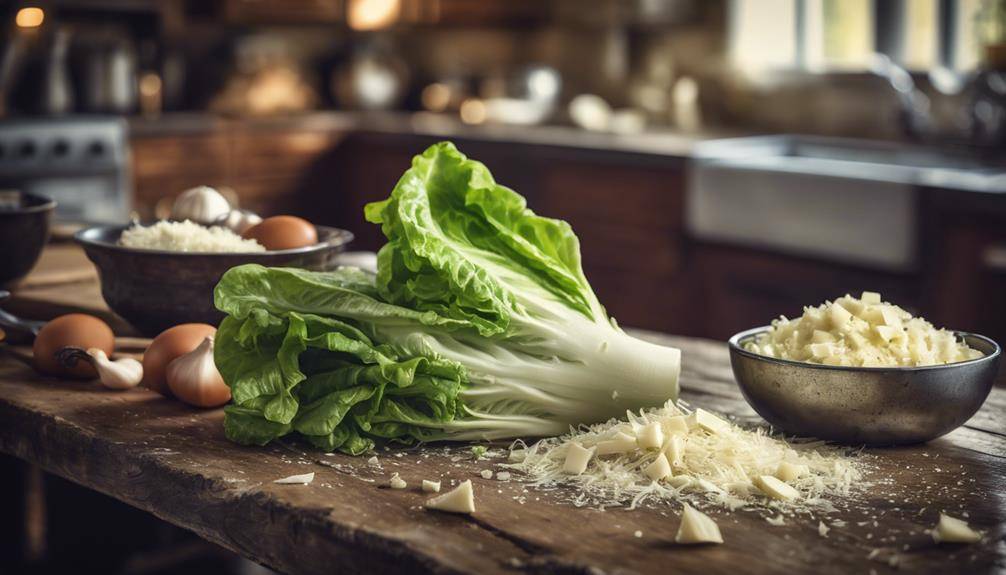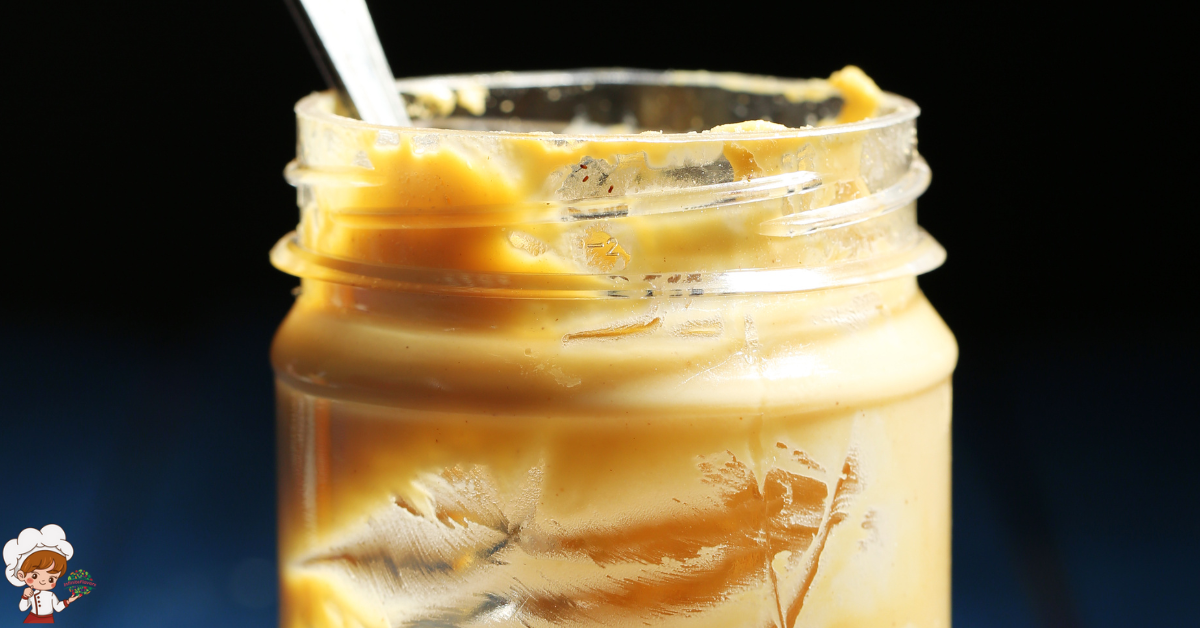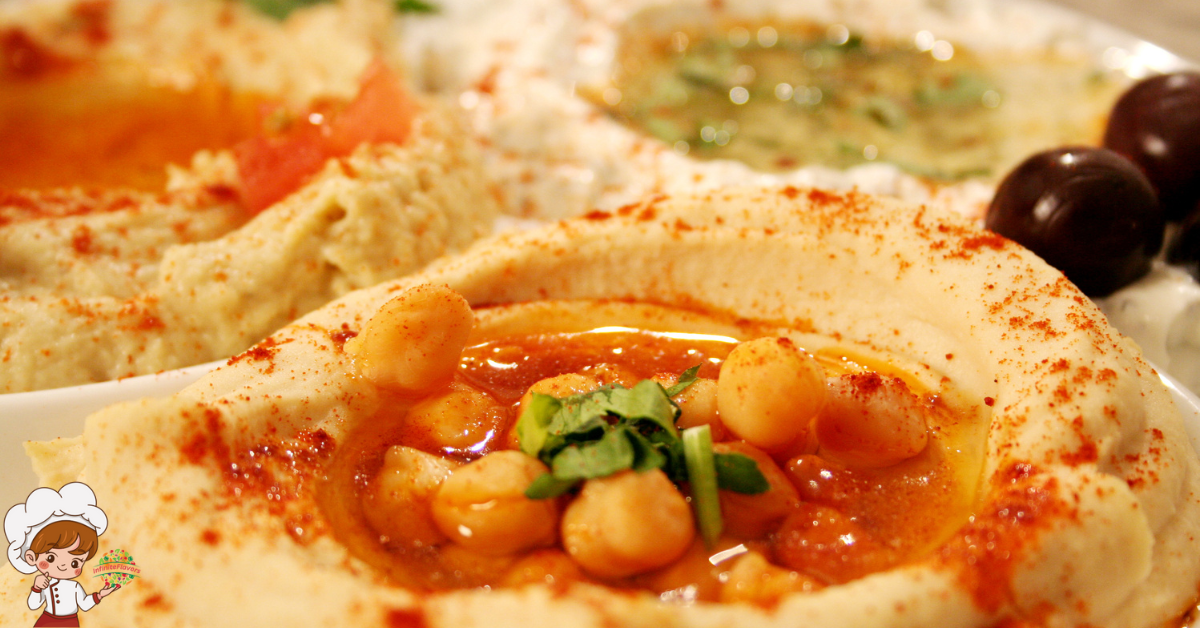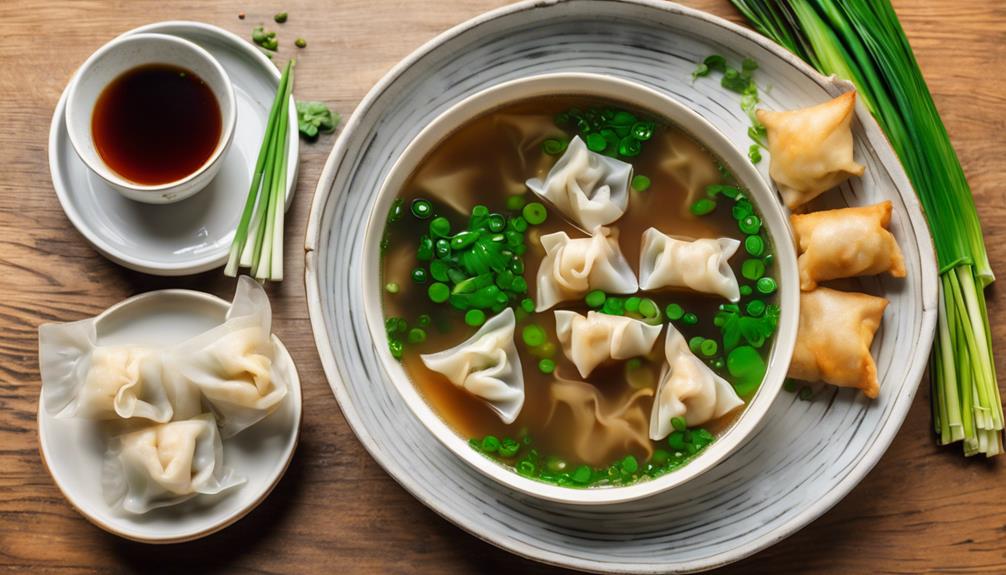The Best Regional French Cooking Styles
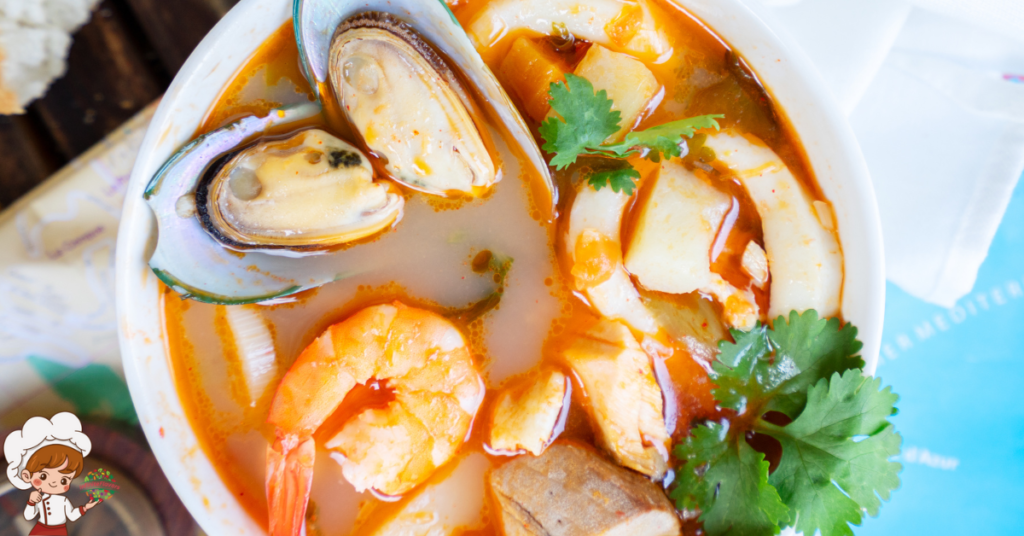
The Best Regional French Cooking Styles; Imagine yourself standing in a bustling marketplace in France, surrounded by the enticing aromas of sizzling meats, fragrant herbs, and freshly baked bread. Each region of this culinary paradise has its own distinct style of cooking, like a symphony composed of unique flavors, techniques, and ingredients.
From the hearty and rich dishes of Burgundy to the delicate flavors of Provence, and from the comforting coastal stews of Normandy to the sophisticated cuisine of Côte D’azur, the diverse regional French cooking styles offer a tantalizing journey through the country’s gastronomic landscape. But what makes each style truly special, and how do they reflect the culture and history of their respective regions? Prepare to uncover the secrets behind these culinary treasures as we embark on a delectable exploration of Regional French Cooking Styles.
Burgundy: Hearty and Rich
Are you ready to discover the rich and hearty flavors of Burgundian cuisine? Burgundy, one of the famous wine regions in France, is known for its hearty red wine and classic beef dishes that are a staple in the regional French cuisine.
When it comes to Burgundian cuisine, it’s all about the harmony between food and wine. The region is renowned for its world-class wines, especially the deep and robust reds made from Pinot Noir grapes. These wines have a distinct character that pairs perfectly with the flavors of the local cuisine.
One of the signature dishes of Burgundy is Boeuf Bourguignon, a classic beef stew that showcases the region’s love for slow-cooked, tender meat. The dish is made by braising beef in red wine, usually Burgundy wine, along with onions, carrots, and mushrooms. The result is a melt-in-your-mouth dish with flavors that are rich, complex, and deeply satisfying.
Another iconic dish from Burgundy is Coq au Vin, which translates to “rooster in wine.” This dish is made by braising chicken in red wine, typically Burgundy wine, along with bacon, mushrooms, and onions. The long, slow cooking process infuses the chicken with the flavors of the wine and creates a dish that is hearty, comforting, and full of depth.
In addition to these classic beef dishes, Burgundy is also known for its escargots de Bourgogne, or Burgundy snails, which are cooked in a garlic and parsley butter sauce. This delicacy is a true representation of the region’s culinary heritage and is a must-try for any food lover.
Provence: Delicate Flavors
After savoring the hearty and rich flavors of Burgundy, it’s time to embark on a culinary journey to Provence and indulge in its delicate and captivating cuisine. In Provence, the emphasis is on light, fresh flavors that showcase the region’s abundant seafood and aromatic herbs and spices.
Provence is known for its delicate seafood dishes, which highlight the region’s proximity to the Mediterranean Sea. From succulent grilled fish to tender poached shellfish, every bite is a celebration of the sea’s bounty. The delicate flavors of the seafood are enhanced by the use of aromatic herbs and spices, such as thyme, rosemary, and fennel. These fragrant ingredients infuse the dishes with a unique Provencal flair.
Aromatic herbs and spices are the heart and soul of Provencal cuisine. The region is blessed with an abundance of herbs, thanks to its sunny climate and fertile soil. Herbes de Provence, a blend of dried herbs including thyme, rosemary, oregano, and savory, is a staple in Provencal cooking. It adds a subtle and complex flavor to dishes, elevating them to new heights.
In addition to seafood and herbs, Provencal cuisine also incorporates a variety of vegetables and fruits. Fresh tomatoes, bell peppers, and eggplants are often used to create flavorful stews and ratatouille, while juicy peaches and plums are transformed into delectable desserts.
In Provence, delicate flavors reign supreme. The cuisine is a harmonious balance of fresh seafood, aromatic herbs, and vibrant produce, resulting in dishes that are light, yet full of flavor. So, why not take a culinary journey to Provence and savor the delicate delights it has to offer?
Normandy: Comforting Coastal Stews
Indulge in the rich flavors of the sea with comforting coastal stews from Normandy. These hearty dishes showcase the bounty of the region’s coastline, with an emphasis on fresh seafood and delicate cream sauces. Pair these satisfying stews with creamy potato dishes and traditional ciders for a truly comforting and authentic Normandy experience.
Rich Seafood Flavors
With its rich maritime heritage and abundance of fresh seafood, Normandy offers a delectable array of comforting coastal stews that will transport you to the rugged shores of this iconic French region. Influenced by its proximity to the sea, Normandy’s seafood dishes are renowned for their rich flavors and hearty textures. The fusion of traditional French techniques with other cuisines has created a unique and diverse culinary experience.
One such example is the fusion of Normandy’s seafood with Asian flavors, resulting in dishes like bouillabaisse infused with fragrant lemongrass and ginger. Another popular dish is the Normandy-style seafood stew, which combines locally sourced fish and shellfish with the region’s famous apple cider, creating a harmonious balance of sweet and savory flavors. Whether you choose a classic recipe or an innovative twist, Normandy’s rich seafood stews are sure to delight your taste buds and transport you to the coastal beauty of this enchanting region.
Creamy Potato Dishes
Continuing our exploration of Normandy’s comforting coastal stews, we now turn our attention to the delightful world of creamy potato dishes. One of the most beloved dishes in Normandy is creamy mashed potatoes. These potatoes are boiled until tender and then mashed with butter, cream, and a touch of nutmeg, resulting in a velvety smooth texture that melts in your mouth. The richness of the butter and cream perfectly complements the earthy flavor of the potatoes, creating a dish that is both comforting and indulgent.
Another popular creamy potato dish in Normandy is potato gratin. Thinly sliced potatoes are layered with cream, grated cheese, and sometimes onions or garlic, then baked until golden and bubbling. The result is a heavenly dish with a crispy top and tender, creamy layers underneath. Whether you choose creamy mashed potatoes or potato gratin, these dishes are sure to satisfy your cravings for comfort food.
Traditional Cider Pairings
To fully appreciate the comforting coastal stews of Normandy, it is essential to explore the traditional cider pairings that perfectly complement these hearty dishes. Normandy, known for its rich culinary traditions, is also famous for its apple orchards and cider production. The region’s traditional ciders, made from locally grown apples, have a unique flavor profile that pairs beautifully with the robust flavors of Normandy’s stews.
When it comes to cider pairings, the key is to find a balance between the sweetness and acidity of the cider and the richness of the stew. The natural sweetness of the cider enhances the savory flavors of the stew, while the acidity cuts through the richness, providing a refreshing contrast.
For a classic pairing, try a dry or semi-dry cider with a rich and meaty stew like the popular Normandy dish, Coq au Cidre. The cider’s crispness and subtle fruitiness complement the tender chicken and earthy flavors of the dish, creating a harmonious combination.
For dessert, traditional cider pairings often include seasonal fruit desserts. The natural sweetness and slight effervescence of the cider elevate the flavors of dishes like apple tart or pear clafoutis, providing a delightful ending to a comforting meal.
Côte D’azur: Sophisticated Cuisine
The cuisine of Côte D’azur embodies sophistication through its refined flavors and exquisite presentation. This region, located on the southeastern coast of France, is renowned for its sophisticated coastal cuisine that showcases the abundance of local Mediterranean ingredients. The culinary traditions of Côte D’azur reflect the region’s glamorous reputation, where the rich and famous converge to enjoy the beautiful beaches and indulge in the finest gastronomic experiences.
One of the defining characteristics of Côte D’azur cuisine is its emphasis on fresh, seasonal ingredients. The proximity to the Mediterranean Sea allows for a bountiful harvest of seafood, which serves as the backbone of many dishes. From succulent prawns to delicate sea bass, the seafood in Côte D’azur is treated with the utmost care to preserve its natural flavors. Local fishermen bring in their catch daily, ensuring that the ingredients used in the dishes are of the highest quality.
In addition to seafood, the cuisine of Côte D’azur celebrates the vibrant flavors of the Mediterranean region. Fresh vegetables such as tomatoes, zucchini, and eggplants are commonly used, along with fragrant herbs like thyme, rosemary, and basil. Olive oil, a staple in Mediterranean cooking, is generously drizzled over salads and used for cooking, adding a distinctive richness to the dishes.
The sophisticated nature of Côte D’azur cuisine is further enhanced by the meticulous attention to detail in the presentation of each dish. Chefs in this region take pride in creating visually stunning plates that are as pleasing to the eye as they are to the palate. From delicate garnishes to artful arrangements, every dish is a work of edible art.
Alsace: German Influences
With its unique location and rich history, Alsace brings a distinct culinary blend that is influenced by both French and German traditions. The German culinary traditions in Alsace have had a significant impact on the region’s cuisine, resulting in a unique and flavorful Alsatian cuisine. The Alsace Lorraine influences on regional cooking can be seen in the ingredients, techniques, and dishes that have become synonymous with this region.
Here are five key aspects of the German influences on Alsatian cuisine:
- Ingredients: German culinary traditions have introduced ingredients such as sauerkraut, sausages, and potatoes to Alsatian cuisine. These ingredients are commonly used in dishes like choucroute garnie, a hearty dish of sauerkraut cooked with various meats and sausages.
- Techniques: German cooking techniques, such as smoking and pickling, have been incorporated into Alsatian cuisine. Smoked meats like ham and bacon are commonly used in Alsatian dishes, adding a unique depth of flavor.
- Flavors: German influences have also contributed to the distinct flavors found in Alsatian cuisine. The combination of sweet and savory flavors is a hallmark of Alsatian dishes, influenced by the German tradition of balancing flavors.
- Breads and Pastries: German baking traditions have influenced the breads and pastries of Alsace. Pretzels, gingerbread, and kugelhopf, a traditional Alsatian cake, are all examples of German-inspired baked goods that are popular in the region.
- Beer: The German influence is also evident in the choice of beverages in Alsace. Beer, particularly lagers and wheat beers, is a common accompaniment to Alsatian cuisine, reflecting the German beer culture.
The German influences on Alsatian cuisine have created a unique culinary identity that combines the best of both French and German traditions. The result is a rich and flavorful cuisine that is truly representative of the Alsace region.
Brittany: Seafood Specialties
In Brittany, the coastal region of France, seafood takes center stage in its diverse and delectable culinary repertoire. With its long coastline, rich fishing traditions, and abundance of fresh seafood, it’s no wonder that Brittany is renowned for its seafood specialties.
One of the most famous seafood recipes from Brittany is the Breton lobster. Known for its sweet and succulent meat, the Breton lobster is often cooked simply, either grilled or steamed, to highlight its natural flavors. Another popular dish is the Cotriade, a traditional fish stew made with a variety of fish, such as cod, haddock, and mackerel, along with potatoes, onions, and herbs. The combination of the fresh fish and aromatic ingredients creates a hearty and comforting dish that is perfect for colder days.
In addition to these classic dishes, Brittany also offers a wide range of seafood delicacies. From oysters and mussels to scallops and langoustines, the region’s diverse seafood offerings cater to every palate. Whether enjoyed in a rustic seaside restaurant or purchased directly from the local markets, the seafood in Brittany is always of the highest quality.
The fishing traditions in Brittany have been passed down for generations, and the locals take great pride in their seafood industry. The fishermen use traditional techniques and sustainable practices to ensure the long-term viability of their catch. This commitment to sustainability not only preserves the region’s fishing heritage but also guarantees the freshness and quality of the seafood.
Lyon: Gastronomic Capital
Continuing our exploration of French cooking styles, let’s now turn our attention to Lyon, a city that proudly holds the title of the gastronomic capital of France. Lyon is renowned for its rich gastronomic traditions and has produced many famous chefs who have made significant contributions to the culinary world.
Here are five key aspects that make Lyon a gastronomic paradise:
- Bouchons: These traditional Lyon restaurants serve hearty, rustic dishes that showcase the region’s culinary heritage. From sausages and tripe to chicken liver pâté and quenelles, bouchons offer a taste of authentic Lyonnaise cuisine.
- Paul Bocuse: Perhaps the most famous chef to emerge from Lyon, Paul Bocuse revolutionized French cuisine with his innovative approach and emphasis on fresh, high-quality ingredients. His restaurant, L’Auberge du Pont de Collonges, has held three Michelin stars for over 50 years.
- Les Halles de Lyon Paul Bocuse: This vibrant food market is a must-visit for any food lover. With over 60 stalls offering a plethora of local produce, cheese, meats, and pastries, it’s a true reflection of Lyon’s gastronomic abundance.
- Lyonnais Specialties: Lyon is known for its unique dishes, such as coq au vin, quenelles de brochet (pike dumplings), and salade lyonnaise. These delicacies highlight the city’s commitment to preserving its culinary heritage.
- Les Toques Blanches Lyonnaises: Founded in 1936, this prestigious association brings together Lyon’s top chefs, who work tirelessly to maintain the city’s culinary reputation. These chefs uphold the traditions of Lyon’s cuisine while also embracing innovation and creativity.
Lyon’s gastronomic traditions and famous chefs have firmly established the city as the culinary heart of France. Whether you’re indulging in a traditional meal at a bouchon or experiencing the culinary genius of Paul Bocuse, Lyon offers a true feast for the senses.
Basque Country: Bold and Spicy
Get ready to explore the bold and spicy cuisine of Basque Country. Known for its vibrant spices and robust flavors, Basque cooking is a true feast for the senses. From traditional dishes like bacalao al pil-pil to piquillo peppers stuffed with spicy chorizo, the Basque region’s culinary offerings are sure to leave you craving for more.
Spices and Flavors
The Basque Country is renowned for its bold and spicy flavors, making it a standout region in French cooking styles. The unique spices and flavors of the Basque cuisine are a result of its rich history and cultural influences. Here are five key elements that define the Basque Country’s spice and flavor profile:
- Espelette Pepper: This vibrant red chili pepper is a staple in Basque cuisine and adds a mild heat and smoky flavor to dishes.
- Bayonne Ham: The famous cured ham from the Basque Country has a distinct flavor, thanks to the traditional salting and drying process.
- Piment d’Espelette: Made from dried and ground Espelette peppers, this spice adds a fiery kick to dishes and is often used as a seasoning or garnish.
- Basque Sheep Cheese: The strong and tangy flavor of this cheese adds depth and richness to various dishes, including traditional Basque recipes.
- Seafood: The coastal location of the Basque Country means that fresh seafood is abundant. The bold flavors of the sea enhance the region’s cuisine, from grilled fish to hearty seafood stews.
The combination of these flavors creates a fusion cuisine that is both bold and exciting, making the Basque Country a must-visit destination for food lovers.
Traditional Basque Dishes
With its bold and spicy flavors, the Basque Country offers a tantalizing array of traditional dishes that are sure to excite your taste buds. Traditional Basque ingredients such as piment d’Espelette, a fiery red chili, and fresh seafood from the Bay of Biscay are combined in unique and delicious ways. One famous Basque dish is bacalao a la vizcaina, a salted cod stew cooked with tomatoes, peppers, and onions.
Another popular dish is txipirones en su tinta, tender baby squid cooked in their own ink. To experience the full range of Basque cuisine, be sure to attend one of the many Basque food festivals held throughout the year. These festivals showcase the region’s culinary traditions and offer a chance to taste traditional Basque dishes prepared by local chefs.
Influence of Neighboring Regions
Influenced by its neighboring regions, the Basque Country’s bold and spicy cuisine showcases a unique fusion of flavors that will leave you craving more. The close proximity to Spain and its distinctive culinary traditions has greatly influenced Basque cuisine, resulting in a rich and diverse gastronomic experience. Here are five key ways in which the neighboring regions have influenced the Basque cuisine:
- Incorporation of Spanish spices and seasonings, such as paprika, saffron, and chili peppers, which add a fiery kick to many Basque dishes.
- Introduction of Spanish ingredients like chorizo, jamón, and sheep’s milk cheeses, which lend a distinct flavor profile to Basque dishes.
- Influence of French techniques, particularly in the preparation of pastries and desserts, resulting in delicate, flaky creations that are a true delight.
- Integration of Basque seafood with Spanish and French cooking styles, resulting in innovative dishes like marmitako, a hearty fish stew.
- Adoption of Spanish and French wine-making techniques, leading to the production of exceptional wines that complement the bold flavors of Basque cuisine.
The fusion of flavors from neighboring regions has made Basque cuisine a true culinary adventure that should not be missed.
Loire Valley: Elegant and Refined
Nestled along the banks of the majestic Loire River lies the Loire Valley, a culinary haven known for its elegant and refined cooking styles. The region’s cuisine is a reflection of its rich history and abundant natural resources. Loire Valley cooking is characterized by its emphasis on fresh ingredients, delicate flavors, and meticulous preparation. It is a cuisine that exudes sophistication and refinement.
One of the key elements of Loire Valley cooking is its elegant and refined approach to farmhouse cooking. Traditional dishes are prepared with a meticulous attention to detail, combining simple ingredients to create complex and harmonious flavors. The emphasis is on using the best quality ingredients, such as fresh vegetables, locally sourced meats, and the region’s renowned seafood. The result is a cuisine that is both rustic and refined, celebrating the flavors of the land and the sea.
Loire Valley cuisine also draws inspiration from the region’s abundant natural resources. The Loire River and its tributaries provide an abundance of freshwater fish, such as pike, perch, and trout, which are often featured in traditional dishes. The region’s fertile soil is perfect for growing a variety of fruits and vegetables, including asparagus, mushrooms, and cherries, which are used to add depth and flavor to many Loire Valley dishes.
In addition to its emphasis on fresh ingredients, Loire Valley cooking also showcases the region’s rich culinary heritage. The Loire Valley has a long history of winemaking, and its wines are often used in cooking to enhance flavors and add depth to dishes. The region is also known for its goat cheese, such as the famous Crottin de Chavignol, which is often used in salads, tarts, and other savory dishes.
Corsica: Mediterranean Fare
Corsica, an island in the Mediterranean Sea, offers a delectable cuisine that showcases the vibrant flavors of the region. With its unique geographical location, Corsican culinary traditions draw influences from both Italian and French cuisines, resulting in a rich and diverse gastronomy. When it comes to Mediterranean seafood dishes, Corsica truly shines. Here are five highlights of Corsican cuisine:
- Bouillabaisse: This traditional fish stew is a staple in Corsican cooking. Made with a variety of local fish, shellfish, and flavored with aromatic herbs and spices, bouillabaisse is a delightful melody of flavors.
- Brocciu: A soft cheese made from ewe’s milk, brocciu is an integral part of Corsican cuisine. It is used in various dishes, from savory pastries to desserts, adding a creamy and slightly tangy taste.
- Cannelloni: Corsican cannelloni is a delightful twist on the classic Italian dish. Stuffed with a flavorful mixture of brocciu cheese, spinach, and herbs, and bathed in a rich tomato sauce, it is a true crowd-pleaser.
- Figatellu: This Corsican specialty is a type of sausage made from pork liver, flavored with garlic, herbs, and spices. It is often grilled or pan-fried and enjoyed as a delicious appetizer or as part of a charcuterie platter.
- Fiadone: A Corsican dessert made with brocciu cheese, eggs, and sugar, fiadone is a creamy and decadent treat. It is typically baked until golden and served chilled, making it the perfect ending to a Corsican meal.
Corsica’s Mediterranean fare is a true reflection of the island’s cultural heritage and natural resources. From the abundance of fresh seafood to the use of locally sourced ingredients, Corsican cuisine is a testament to the island’s deep connection to the sea and the land. Whether you’re a seafood lover or a cheese enthusiast, Corsica’s culinary traditions are sure to leave a lasting impression.
Champagne: Luxurious Sparkling Cuisine
Get ready to indulge in the opulence of Champagne cuisine. From rich pairings that elevate the flavors of this luxurious sparkling wine to traditional recipes that showcase its versatility, Champagne cuisine is a true celebration of taste. Explore unique ingredients that are used in Champagne-based dishes, adding a touch of elegance to every bite.
Rich Champagne Pairings
Indulge in the epitome of luxury with rich Champagne pairings that will elevate your dining experience to new heights. Champagne is not only a delightful sparkling wine but also a perfect accompaniment to a variety of rich dishes. Whether you’re hosting a special celebration or simply treating yourself, these Champagne pairings will bring out the flavors and textures of your meal in a truly exquisite way.
- Seared foie gras with a crisp Brut Champagne
- Lobster bisque with a buttery Blanc de Blancs Champagne
- Beef Wellington with a full-bodied Vintage Champagne
- Truffle risotto with a creamy Rosé Champagne
- Dark chocolate mousse with a decadent Demi-Sec Champagne
If you’re looking for sparkling wine alternatives, consider Crémant or Cava, which offer similar effervescence and elegance at a more affordable price point. However, for those truly special occasions, nothing compares to the luxurious experience of rich Champagne pairings.
Traditional Champagne Recipes
Enhance your appreciation of Champagne’s luxurious sparkling cuisine by exploring traditional Champagne recipes that showcase the exquisite flavors and culinary heritage of the region. Traditional champagne cocktails are a perfect way to start your culinary journey. The classic Champagne Cocktail, made with a sugar cube soaked in Angostura bitters and topped with champagne, is a timeless favorite. For a twist, try the Kir Royale, which combines champagne with crème de cassis for a fruity and elegant drink.
Moving on to desserts, champagne-infused treats are a delightful indulgence. Champagne sabayon is a luscious custard-like dessert made with egg yolks, sugar, and champagne, served with fresh fruits. Another option is champagne sorbet, a refreshing and light dessert that pairs perfectly with berries or citrus fruits. These traditional recipes truly capture the essence of Champagne’s sparkling cuisine, offering a taste of luxury and elegance.
Unique Champagne Ingredients
One of the defining characteristics of Champagne’s luxurious sparkling cuisine is the use of unique and exquisite ingredients that elevate the flavor and elegance of the dishes. When it comes to unique champagne pairings, the possibilities are endless. Here are five ingredients that are often used to create unforgettable champagne cocktail recipes:
- Fresh fruits: From juicy strawberries to tangy citrus fruits, adding fresh fruits to champagne creates a refreshing and vibrant flavor profile.
- Edible flowers: Delicate and visually stunning, edible flowers like rose petals or lavender add a touch of elegance and fragrance to champagne cocktails.
- Herbs and spices: Infusing champagne with herbs like mint or spices like cinnamon can lend a unique and aromatic twist to your drink.
- Bitters: A few drops of bitters can add depth and complexity to your champagne cocktail, bringing out the flavors of the other ingredients.
- Liqueurs: From sweet and fruity liqueurs to rich and velvety ones, adding a splash of liqueur to your champagne can create a truly indulgent and decadent experience.
Savoie: Alpine Delights
Nestled in the breathtaking French Alps, Savoie showcases a delectable array of alpine delights that will tantalize your taste buds. This region is renowned for its alpine cheese specialties and traditional mountain recipes that have been passed down through generations.
One of the highlights of Savoie’s cuisine is its alpine cheese specialties. The region is famous for its production of Beaufort, a semi-firm cheese with a nutty and fruity flavor. Made from the milk of Tarine and Abondance cows that graze on the lush alpine meadows, Beaufort has a distinct taste that reflects the terroir of the region. Another popular cheese is Tomme de Savoie, a semi-soft cheese with a creamy texture and a mild, earthy flavor. Both of these cheeses are essential ingredients in many traditional Savoie dishes.
Savoie’s traditional mountain recipes are a true reflection of the region’s rich culinary heritage. One iconic dish is Tartiflette, made with layers of potatoes, reblochon cheese, bacon, and onions. This hearty and indulgent dish is a favorite among locals and visitors alike, especially during the cold winter months. Another classic Savoie dish is Raclette, where a wheel of cheese is melted and scraped onto boiled potatoes, cured meats, and pickles. The combination of melted cheese, savory meats, and tangy pickles creates a perfect balance of flavors.
In addition to these cheese-based dishes, Savoie is also known for its cured meats, such as Jambon de Savoie, a dry-cured ham that is delicately seasoned and aged to perfection. This regional specialty adds a savory and smoky flavor to various Savoie dishes.
Whether you are a cheese lover or simply appreciate hearty mountain cuisine, Savoie’s alpine delights are sure to satisfy your culinary cravings. From the rich flavors of Beaufort and Tomme de Savoie to the comforting warmth of Tartiflette and Raclette, Savoie offers a truly unique gastronomic experience that will leave you wanting more.
Aquitaine: Flavors of Southwest France
Get ready to explore the rich culinary heritage of Aquitaine, a region in Southwest France known for its traditional dishes, diverse influences, and unique flavors. From hearty cassoulet to delicate foie gras, Aquitaine cuisine showcases a fusion of French, Spanish, and Basque influences that create a truly distinct dining experience. With its emphasis on fresh seafood, game meats, and locally sourced ingredients, Aquitaine offers a tantalizing array of flavors that will transport you to the heart of this vibrant region.
Traditional Aquitaine Dishes
Aquitaine’s rich culinary heritage showcases a diverse array of traditional dishes that capture the flavors of Southwest France. Influenced by Spanish cuisine and featuring unique regional ingredients, the traditional dishes of Aquitaine offer a delightful blend of flavors and textures. Here are five must-try dishes:
- Foie Gras: A delicacy made from the liver of a fattened duck or goose, often served with crusty bread and sweet wine.
- Garbure: A hearty vegetable soup made with cabbage, beans, and various meats such as ham or duck.
- Axoa: A traditional Basque dish made with veal, peppers, and onions, cooked in a rich tomato sauce.
- Canelés: Small, caramelized pastries with a soft custard center, flavored with rum and vanilla.
- Piment d’Espelette: A spicy chili pepper from the Basque region, used to season dishes and add a touch of heat.
These dishes truly embody the essence of Aquitaine’s culinary traditions, offering a taste of the region’s unique flavors and cultural influences.
Influences on Aquitaine Cuisine
With a rich history and a diverse range of influences, Aquitaine cuisine captivates the palate with its unique blend of flavors and cultural nuances. One of the major influences on Aquitaine cuisine is the neighboring country of Spain. The close proximity of Spain has led to a significant influence on the flavors and techniques used in Aquitaine dishes. Spanish cuisine, with its bold spices and flavors, has made its way into the culinary traditions of Aquitaine, adding a vibrant and fiery touch to the local dishes. This influence can be seen in dishes like pipérade, a flavorful Basque dish made with peppers, onions, and tomatoes.
Another important aspect of Aquitaine cuisine is the emphasis on local wine pairings. The region is renowned for its vineyards and produces a wide variety of wines. The locals take great pride in pairing their dishes with the perfect local wine, enhancing the flavors and creating a harmonious dining experience. From pairing a rich Bordeaux red with a hearty duck confit to enjoying a crisp white wine with fresh seafood, the local wine pairings play a vital role in enhancing the overall dining experience in Aquitaine. The blend of Spanish influences and the art of wine pairing make Aquitaine cuisine a truly unique and unforgettable culinary experience.
Signature Flavors and Ingredients
To further explore the culinary delights of Aquitaine, let’s now dive into the distinctive flavors and ingredients that define the gastronomy of Southwest France. Aquitaine is known for its signature flavors that are rich and robust. The regional ingredients play a vital role in creating these unique tastes. Here are some of the key elements that make Aquitaine cuisine stand out:
- Foie gras: This delicacy made from the liver of fattened ducks or geese is a true gourmet treat.
- Truffles: Aquitaine is famous for its black truffles, which add an earthy and luxurious flavor to dishes.
- Duck confit: Slow-cooked in its own fat, this tender and flavorful dish is a staple in Aquitaine.
- Bayonne ham: This cured ham is known for its salty and slightly sweet taste, making it a favorite ingredient in many dishes.
- Armagnac: A brandy produced in the region, Armagnac adds a unique warmth and depth to desserts and sauces.
These signature flavors and regional ingredients are what make Aquitaine’s cuisine so distinctive and sought after.
Pays De La Loire: Farmhouse Cooking
Pays De La Loire showcases the rustic charm of farmhouse cooking, with its emphasis on fresh, locally-sourced ingredients and traditional cooking techniques. This region, located in western France, is known for its agricultural heritage, and its cuisine reflects the abundance of seasonal produce and the skillful use of rustic techniques.
Farmhouse cooking in Pays De La Loire relies heavily on the use of seasonal ingredients. The region’s fertile soil and temperate climate allow for the cultivation of a wide variety of fruits, vegetables, and herbs. From juicy tomatoes and crisp lettuce to fragrant herbs like thyme and rosemary, the ingredients are selected at their peak of freshness, ensuring vibrant flavors and optimal nutritional value in every dish.
The techniques used in farmhouse cooking are rooted in tradition and simplicity. The focus is on bringing out the natural flavors of the ingredients, rather than relying on complex preparations. Slow cooking methods, such as braising and stewing, are common, allowing the flavors to meld together and develop depth. Rustic techniques like roasting and grilling are also popular, adding a smoky char and enhancing the natural sweetness of the ingredients.
One classic dish that exemplifies farmhouse cooking in Pays De La Loire is the Poulet de Bresse, a roasted chicken dish that showcases the region’s exceptional poultry. The chicken is marinated with fragrant herbs, then roasted to perfection, resulting in tender and flavorful meat with a crispy golden skin. This simple yet delicious dish is a testament to the skillful use of fresh, seasonal ingredients and traditional cooking techniques.
Farmhouse cooking in Pays De La Loire is a celebration of the region’s agricultural bounty and culinary heritage. It is a cuisine that embraces the simplicity of nature, allowing the flavors of the ingredients to shine. Whether it’s a hearty stew or a delicate salad, each dish embodies the rustic charm and rich flavors that define farmhouse cooking in this beautiful region of France.
Frequently Asked Questions: The Best Regional French Cooking Styles
What Are Some Common Ingredients Used in Burgundy’s Hearty and Rich Cooking Style?
In Burgundy’s hearty and rich cooking style, common ingredients include beef and red wine. These two elements form the foundation of many traditional dishes, adding depth and flavor to the culinary creations of the region.
How Does the Cuisine of Provence Differ From the Delicate Flavors of Other Regions?
In Provence, the cuisine stands out with its vibrant flavors and robust dishes. Traditional herbs and spices like thyme, rosemary, and lavender add a distinct taste, while Provençal cooking techniques bring a unique charm to the table.
What Are the Signature Coastal Stews of Normandy?
Normandy’s famous coastal stews, Bouillabaisse and Moules marinières, showcase the region’s rich seafood offerings. Additionally, Normandy’s unique seafood dishes, like Coquilles Saint Jacques and Sole Meunière, are a true delight for any seafood lover.
What Makes Côte D’azur’s Cuisine Sophisticated Compared to Other Regional Styles?
When it comes to regional French cooking styles, the cuisine of Côte d’Azur stands out for its sophistication. The difference in cooking techniques and the influence of Mediterranean flavors elevate this style to a whole new level.
How Does Brittany’s Seafood Specialties Stand Out From Other Coastal Regions in France?
Brittany’s unique seafood dishes stand out from other coastal regions in France. The use of traditional cooking techniques enhances the flavors of the fresh seafood, creating a culinary experience that is simply unparalleled.
Conclusion
In conclusion, regional French cooking styles offer a diverse and rich culinary experience. From the hearty and rich dishes of Burgundy to the delicate flavors of Provence, each region showcases its own unique culinary traditions. Normandy brings comforting coastal stews, while Côte D’azur presents sophisticated cuisine. The German influences in Alsace add a unique twist, and Champagne offers luxurious sparkling cuisine. Savoie brings alpine delights, and Aquitaine showcases the flavors of Southwest France. Lastly, Pays De La Loire offers farmhouse cooking. Exploring these regional styles will surely delight any food lover’s palate.



